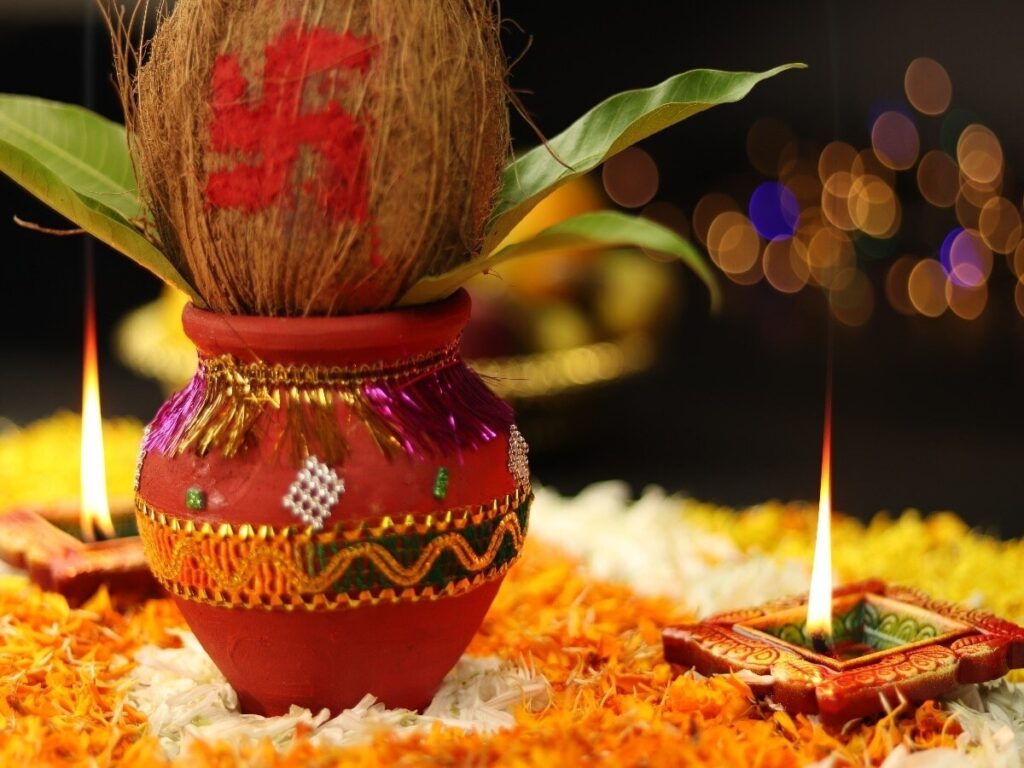The Navratri festival is celebrated with great enthusiasm across India, marking the worship of the Goddess Durga in her nine forms. One of the significant rituals during this sacred time is the Kanya Pujan, which symbolizes the worship of young girls representing the goddess’s divine feminine energy. While many people are familiar with Kanya Pujan, there is often confusion about the subsequent rituals related to the Kalash (sacred pot) that is established during this time. In this article, we will explore the proper procedures to follow after Kanya Pujan and the significance of the Kalash in Navratri.
Understanding the Kalash in Navratri
The Kalash holds immense importance in Hindu rituals and is symbolic of prosperity, fertility, and the divine presence. During Navratri, a Kalash is typically filled with water and placed on the altar, often representing Goddess Durga.
Materials Required for the Kalash Puja
- Clean Kalash (made of metal, clay, or another material)
- Water (purified or holy water)
- Fresh mango leaves
- A coconut
- Rice or grains
- Flowers and incense sticks
- Altar for decoration
Rituals After Kanya Pujan
After performing the Kanya Pujan, it is essential to honor the Kalash appropriately. Here are the steps to follow:
1. Offering Prayers
Begin by offering your prayers to the Kalash. Light a diya (lamp) and incense sticks in front of it. Chant appropriate mantras or hymns dedicated to Goddess Durga to invoke her blessings.
2. Disposing of the Kalash
After the completion of Navratri, the Kalash should be disposed of with respect. Traditionally, this involves submerging the Kalash in a sacred body of water, such as a river or lake. Before doing this, offer flowers, rice, or other items into the water as a symbol of gratitude.
3. Donating the Contents
It is advisable to donate the contents of the Kalash, such as rice or grains, to the needy or to a local temple. This act of charity enhances the spiritual significance of the ritual and spreads goodwill.
4. Conducting a Farewell Ceremony
A simple farewell ceremony can be performed by reciting shlokas or prayers to honor the presence and blessings of the goddess during the festival. This adds a personal touch and enhances the spiritual experience.
Significance of Disposal
The disposal of the Kalash is not merely a physical act; it symbolizes the return of the divine energy back into nature. This act is a reminder of the cyclical nature of life and reverence for the environment.
Conclusion
Understanding the rituals following the Kanya Pujan and the proper treatment of the Kalash is essential for anyone observing Navratri. By following these traditions respectfully, devotees can enhance their spiritual experience and connect deeply with the divine feminine energies celebrated during this auspicious festival. Embracing these practices not only enriches personal devotion but also fosters community spirit through acts of charity and generosity.
